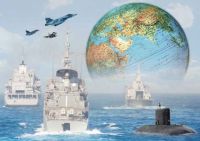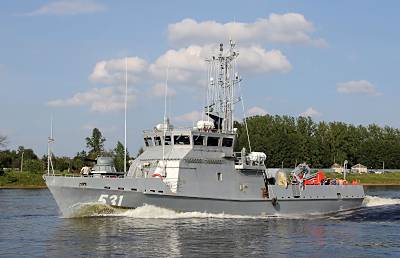Both Julian Corbett and Admiral of the Fleet Sergei Gorshkov had an astute perspective of the importance of a theory of war. Such a hypothesis, they advocated, provided a context to formulate and enable a strategic policy to deter war and, should the need arise, to wage that war. Corbett suggested that “by maritime strategy we mean the principles that govern a war in which the sea is a substantial factor” he went on to add “Since men live upon the land and not upon the sea, great issues between nations at war have always been decided — except in the rarest cases — either by what your army can do against your enemy’s territory and national life, or else by the fear of what the fleet makes it possible for your army to do”. Gorshkov on the other hand enlarged the scope and of sea power and placed it within the framework of comprehensive national power. In his seminal book, The Sea Power of the State he emphasises that “the essence of sea power of the state is how far it is possible to make effective use of the World Ocean or, as it is sometimes said, the hydrosphere of the earth, in the interest of the state as a whole”.
This article is published with the kind permission of “Defence and Security Alert (DSA) Magazine” New Delhi-India
 |
| Click to enlarge |
India’s armed forces have traditionally evolved to cope with operational scenarios. At genesis, this may have been attributed to the military’s role in creation and upholding colonial empire, however, post-independence; to have deliberately brought about a separation between the armed forces and the strategic decision making process was a paradox that defied norms of nation building. The American strategist, George Tanham incisively argued, that India had problems developing a robust security policy including a strong military force because the country was bereft of coherent strategic thought. This operational canvas is a transient that abhors futuristic force planning. It was, therefore, the ‘immediate intimidation’ of the changing global scenario that drove plans and consequently resulted in the accretion of forces. Unfortunately, this inspiration of the instantaneous intimidation was and continues to be the pretender that serves to fill the strategic space. The case of our strategic maritime posture as a function of declared ‘Look East’ policy is a study in point.
The strategic approach
It is interesting to examine the Chinese case not just to view how international events catalysed a strategic approach but also how their inabilities worked to bring about a transformation in their strategic posture. To China, two events of the 1990s had significant impact on the shaping of their military strategy. The first of these is the Gulf War of 1991. China took home not lessons or answers but, a reason for strategic preemption. In the words of General Liu Jingsong “allowing a modern military opponent unfettered access to land, sea and air territories in which to build-up and employ forces, as well as regional bases and logistic hubs to sustain them, was a recipe for defeat”. He pointed out that “the very assembly and positioning of coalition forces constituted first firing and justified action to preempt or deter actual war”. The second event was during the Taiwan Strait crisis of 1995–1996, which to the Chinese was a humiliating experience of their sovereignty being violated when the US deployed two carrier groups in the Straits with impunity. These two events were the primary causes for them to formulate and enable their ‘Access Denial’ strategy. China has never publicly acknowledged this stratagem; however force planning and structuring that we are currently witness to, whether it is the ASAT programme, the missile modernisation, the thrust on ‘informatisation’ and cyber warfare or indeed, of focus to the article, the nuclear submarine build and replacement agenda; should leave none in doubt of the course which their force planners have charted.
Gorshkov enlarged the scope of sea power and placed it within the framework of comprehensive national power. In his seminal book, The Sea Power of the State he emphasises that “the essence of sea power of the state is how far it is possible to make effective use of the World Ocean or, as it is sometimes said, the hydrosphere of the earth, in the interest of the state as a whole
China did not follow the course set by the US and USSR in the cold war. Influenced more by Chairman Mao’s belief that nuclear weapons were paper tigers took a more realistic approach to its military nuclear programme and adopted no first use and limited its arsenal.
Admittedly, substance of the geo-political context that India found itself in was markedly different from that of China or the cold ‘warriors’ in terms of its own aspirations, national character, historical baggage, challenges that it was confronted with and the economics of building a credible conventional and nuclear arsenal. Yet, the need to adopt a strategic approach and to articulate a cogent theory which integrated the promotion, nurturing and maintenance of force with a convincing contract for use remained much the same. It is the understanding and practice of this imperative that has persistently eluded India. Enabling of nuclear capabilities in the maritime sphere is a specific case in point. The history of nuclear militarisation particularly in the Indian maritime context is dogged by secrecy, the lack of open archival information, decision making being left to a politico — techno — bureaucratic enterprise bereft of critical military participation and, significantly, in spasms operational considerations overwhelming the strategic. The essence of the debate that now unfolds is a deeper understanding of the maritime space of interest, its correlation with policy, the challenges that it contains and the essentials of force planning including nuclear forces to fill and shape the strategic space.
The strategic maritime space
This discussion begins by defining the geographical contours within which the impact of the now apparent global power shift will be most felt and within which maritime strategy will operate. In this context the sea space between the 30 degree East Meridian and the 130 degree East Meridian extending to the Antarctic continent provides the theatre within which the strategy will function. This sea space includes the Indian Ocean and the South China Sea Ocean and may be termed the Indian Ocean and the Eastern Ocean (IOEO).
The IOEO hydrospace, bound by landmasses on all sides except the 130 East Meridian, has some unique features. Its weather is dominated by the monsoons and tropical systems, the hydrology of this Ocean makes it difficult for underwater surveillance operations between the 30 degrees north south parallels. Widespread clouding impairs domain transparency. Small ship operations, other than in the littoral seas, are particularly inhibited during the 6 month monsoon period. Density of traffic through the narrow passages and straits makes surveillance without identification incoherent. This Oceanic body is dominated by ten important choke points and narrows. From west to east these 10 critical choke points may be identified as follows: The Cape of Good Hope: The Strait of Babel Mandeb, the Strait of Hormuz (this is a key energy corridor shipping 40 per cent of seaborne oil traded globally), Dondra Head (which provides the passage which connects SLOC from the 9 degree channel to East Asia); 6 degree channel (is the primary route that feeds into the Strait of Malacca); the Malacca Straits (which links the Indian Ocean with the Pacific Ocean (being the most commercially viable sea route with considerable depths, it offers the most cost efficient SLOC); The Sunda Strait; Lombok Straits: Makassar Strait and finally, the Luzon Strait which provides the Pacific passage into the South China Sea.
The eventuality of a US drawback from the region, while of a low probability, remains a contingency that will leave a vacuum which has the potential for friction between China on one side and India and Japan on the other with the littorals going by interests
In essence the ocean space of interest the IOEO, with its ten choke points and narrows, provides the strategic context in general to global trade passing through these waters and in particular to Indian maritime forces that would seek to surveill, deny or control these waters.
Policy, power and vision
An analysis of the current state of international relations and the developments in the region will demand continuity in growth and continuity in modernisation of regional militaries. This continuity in military affairs will most affect China, India and Japan. While the littorals of the IOEO may well develop denial capabilities with their focus on individual interests in these waters, their effectiveness can only be assured through co-operative engagements with like minded nations whose combined presence in the region would better serve individual as well as collective interest.
Within such a co-operative group it is reasonable to assume that individual friction would be subsumed to the larger denial objectives, the expansion of the ASEAN and the creation of the ASEAN Regional Forum (ARF) are suggestive of the littoral’s aspirations to counter-balance the looming presence of China in their grouping. USA’s presence will dominate activities in the region in the immediate and mid-term future. Flash points such as territorial claims both in the maritime and continental domain will remain a source of friction that would necessarily demand military capabilities and a strategic orientation that serves to assure restraint. Where American interests differ with the three major players the latter will demand a role in order to assure its own interests. The eventuality of a US drawback from the region, while of a low probability, remains a contingency that will leave a vacuum which has the potential for friction between China on one side and India and Japan on the other with the littorals going by interests.
India’s strategic nuclear policy is articulated in her nuclear doctrine made public on 04 January 2003. The doctrine presents two perspectives; the first deals with ‘Form,’ nuclear war avoidance is the leit motif. It reinforces the belief that nuclear weapons are not for use, so ‘No First Use (NFU)’ is a natural choice
Since the declaration of India’s Look East Policy, the ASEAN-India relationship has grown in leaps and bounds from the limited sectoral partnership in 1992 to a full dialogue venture in 1995 and subsequently to a summit level collaboration in the first ASEAN-India summit held in 2002. India and China along with ASEAN are set to become the world’s largest economic bloc. The grouping is expected to account for about 27 per cent of Global GDP and will very quickly overtake the EU and USA economies. The ASEAN Regional Forum provides a critical stage for promoting stable relationships between major powers and is a useful complement to bilateral activity which is accepted to be at the heart of the security construct in the ‘Eastern Ocean.’ The buoyancy of the Indo-ASEAN relationship is backed by surging trade figures which in 2007 was US$ 15.06 billion and is slated to hit US$ 60 billion in the current year and is billed for US$ 100 billion by 2014. With such burgeoning stakes in the region, the reason to establish strong and stable security ties now becomes a core issue.

 von
von 
